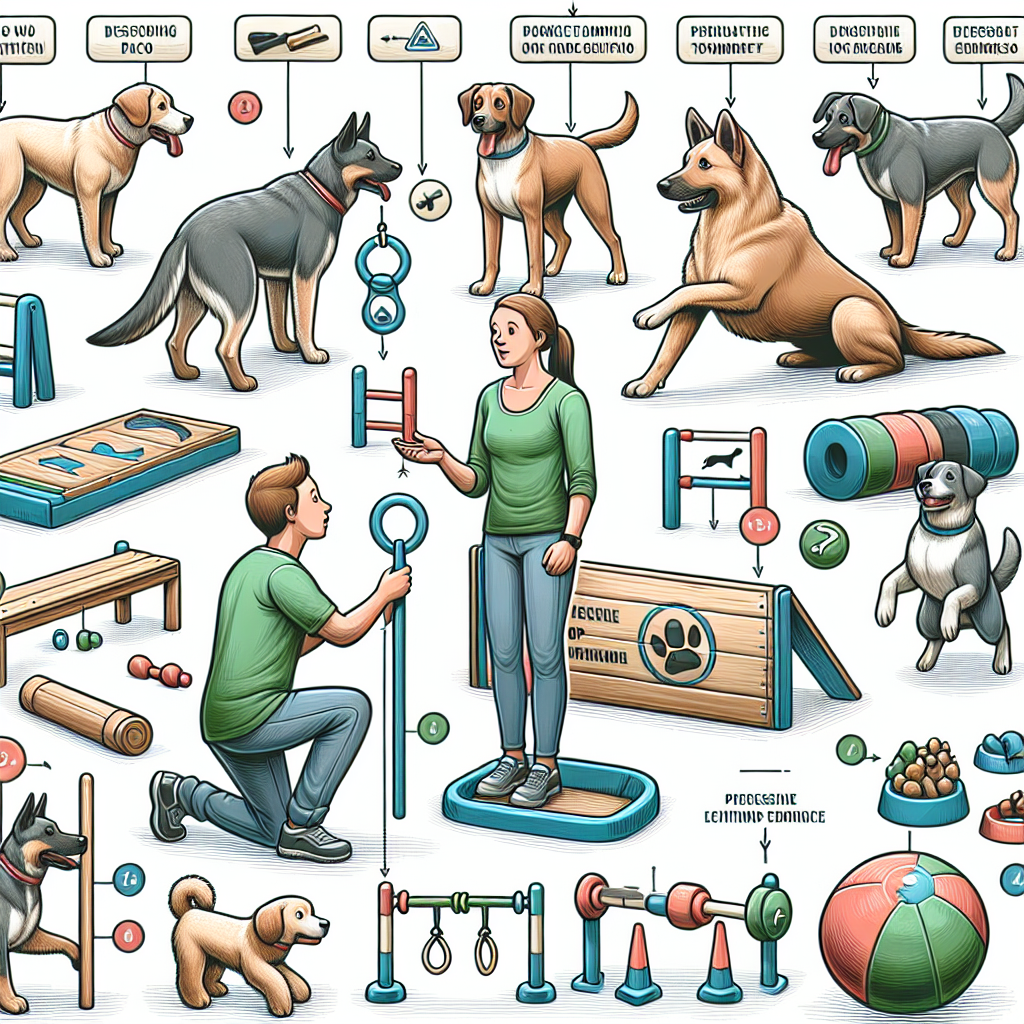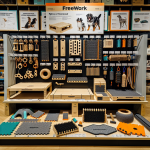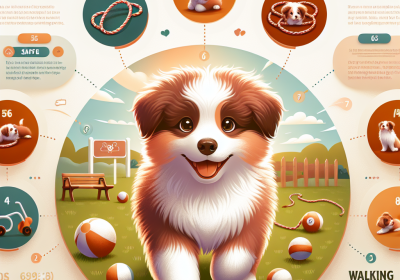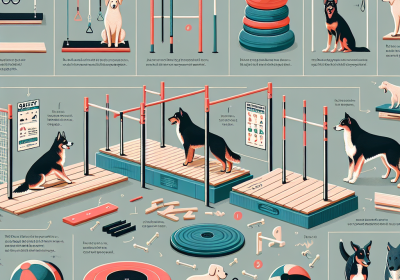How to Properly Use Canine Freework Equipment
Table of Contents
- Understanding The Basics Of Canine Freework Equipment
- Step-By-Step Guide To Setting Up Canine Freework Stations
- Common Mistakes To Avoid When Using Canine Freework Equipment
Canine Freework is an innovative approach to dog training and enrichment that focuses on allowing dogs to explore and interact with their environment in a natural and stress-free manner. Proper use of Canine Freework equipment is essential to maximize the benefits of this method, ensuring that dogs remain engaged, stimulated, and safe. This guide will cover the key aspects of selecting, setting up, and utilizing Canine Freework equipment effectively. From choosing the right tools and materials to creating a conducive environment and monitoring your dog’s behavior, each step is crucial in fostering a positive and enriching experience for your canine companion. By following these guidelines, you can enhance your dog’s physical and mental well-being, strengthen your bond, and promote a more balanced and happy life for your pet.
Understanding The Basics Of Canine Freework Equipment
Understanding the basics of canine freework equipment is essential for any dog owner or trainer aiming to enhance their pet’s physical and mental well-being. Canine freework, a concept that emphasizes allowing dogs to explore and interact with their environment freely, requires specific equipment to ensure safety and effectiveness. To begin with, it is crucial to recognize the variety of tools available and their respective purposes. This knowledge will enable you to make informed decisions and utilize the equipment to its fullest potential.
One of the primary pieces of equipment in canine freework is the harness. Unlike traditional collars, harnesses distribute pressure evenly across a dog’s body, reducing the risk of injury and providing greater control. When selecting a harness, ensure it fits snugly but comfortably, allowing your dog to move freely without chafing. Additionally, opt for a harness with adjustable straps and sturdy buckles to accommodate your dog’s growth and activity level. Transitioning from a collar to a harness can take time, so introduce it gradually, allowing your dog to become accustomed to the new sensation.
Leashes are another fundamental component of canine freework equipment. A standard leash, typically six feet in length, offers a balance between control and freedom. However, for more advanced freework activities, a longer leash, such as a 15 or 30-foot training line, can provide your dog with greater freedom to explore while still maintaining a connection. It is important to choose a leash made of durable material, such as nylon or leather, to withstand the rigors of outdoor activities. Moreover, ensure the leash has a comfortable handle to prevent hand strain during extended use.
In addition to harnesses and leashes, interactive toys play a significant role in canine freework. These toys stimulate your dog’s mind and encourage natural behaviors such as sniffing, digging, and problem-solving. Puzzle toys, for instance, challenge your dog to figure out how to access hidden treats, promoting mental engagement. Similarly, scent-based toys, which can be filled with aromatic substances, tap into your dog’s keen sense of smell, providing a rewarding and enriching experience. When selecting interactive toys, consider your dog’s size, breed, and preferences to ensure they are appropriately challenging and safe.
Furthermore, agility equipment can be incorporated into canine freework to enhance physical fitness and coordination. Items such as tunnels, weave poles, and balance beams offer opportunities for your dog to navigate obstacles, improving their agility and confidence. When introducing agility equipment, start with simple tasks and gradually increase the complexity as your dog becomes more proficient. Always supervise your dog during these activities to prevent accidents and provide positive reinforcement to encourage their progress.
Lastly, safety gear is an indispensable aspect of canine freework equipment. Reflective vests and LED collars enhance visibility during low-light conditions, ensuring your dog remains visible to you and others. Additionally, paw protectors or booties can safeguard your dog’s paws from rough terrain, extreme temperatures, and harmful substances. When selecting safety gear, prioritize comfort and functionality, ensuring it does not impede your dog’s movement or cause discomfort.
In conclusion, understanding the basics of canine freework equipment involves recognizing the importance of harnesses, leashes, interactive toys, agility equipment, and safety gear. By carefully selecting and properly utilizing these tools, you can create a safe and stimulating environment for your dog to explore and thrive. Remember to introduce new equipment gradually, monitor your dog’s response, and make adjustments as needed to ensure a positive and enriching experience.
Step-By-Step Guide To Setting Up Canine Freework Stations

Setting up canine freework stations requires careful planning and attention to detail to ensure a safe and enriching environment for your dog. The first step in this process is selecting an appropriate location. Ideally, the area should be spacious, free from potential hazards, and have a non-slip surface to prevent injuries. Once you have identified a suitable space, gather the necessary equipment, which typically includes a variety of objects such as balance discs, wobble boards, tunnels, and textured mats. These items are designed to engage your dog’s senses and promote physical and mental stimulation.
After assembling your equipment, it is crucial to arrange the items in a manner that encourages exploration and interaction. Begin by placing the larger, more stable objects, such as balance discs and wobble boards, in the center of the area. This allows your dog to become accustomed to the equipment without feeling overwhelmed. Next, position smaller items, like textured mats and tunnels, around the perimeter. This layout not only maximizes the use of space but also creates a natural flow for your dog to follow.
To further enhance the experience, consider incorporating a variety of scents and textures. For instance, you can sprinkle a few drops of essential oils on the mats or scatter small treats throughout the area. These additions will entice your dog to explore and engage with the equipment more thoroughly. Additionally, varying the textures of the objects, such as using rubber mats alongside fabric tunnels, can provide a richer sensory experience.
Once the setup is complete, it is essential to introduce your dog to the freework station gradually. Start by allowing your dog to explore the area at their own pace, without any pressure or guidance. This initial exploration phase helps build confidence and familiarity with the new environment. As your dog becomes more comfortable, you can begin to guide them through specific activities. For example, encourage your dog to walk across a balance disc or navigate through a tunnel. Use positive reinforcement, such as treats and praise, to reward your dog for their efforts and to reinforce desired behaviors.
It is important to monitor your dog’s reactions and adjust the setup as needed. If your dog appears hesitant or anxious, consider removing or repositioning certain items to create a more inviting environment. Conversely, if your dog seems overly excited or distracted, you may need to simplify the setup to help them focus. Regularly rotating the equipment and introducing new objects can also keep the experience fresh and engaging for your dog.
In addition to the physical setup, it is vital to establish a routine for using the freework station. Consistency helps your dog understand what to expect and can enhance their overall experience. Aim to incorporate freework sessions into your dog’s daily routine, gradually increasing the duration and complexity of the activities as your dog becomes more proficient.
Finally, always prioritize safety when using canine freework equipment. Regularly inspect the items for signs of wear and tear, and replace any damaged pieces promptly. Supervise your dog during freework sessions to prevent accidents and ensure they are using the equipment correctly. By following these guidelines, you can create a safe, stimulating, and enjoyable environment that promotes your dog’s physical and mental well-being.
Common Mistakes To Avoid When Using Canine Freework Equipment
When engaging in canine freework, it is essential to understand the common mistakes that can undermine the effectiveness of the equipment and potentially harm your dog. One prevalent error is the improper selection of equipment. Many dog owners, eager to start, may choose tools that are either too advanced or inappropriate for their dog’s size, breed, or skill level. This can lead to frustration for both the handler and the dog, as well as potential safety hazards. Therefore, it is crucial to consult with a professional or conduct thorough research to ensure that the equipment is suitable for your specific canine companion.
Another frequent mistake is neglecting to introduce the equipment gradually. Dogs, like humans, need time to acclimate to new experiences. Introducing too many new elements at once can overwhelm your dog, leading to anxiety and a lack of focus. Instead, start with one piece of equipment and allow your dog to explore it at their own pace. Gradually incorporate additional items as your dog becomes more comfortable and confident. This methodical approach not only builds your dog’s confidence but also fosters a positive association with the equipment.
Furthermore, improper setup and placement of the equipment can significantly impact the effectiveness of the freework session. Ensuring that the equipment is securely and correctly positioned is paramount to prevent accidents. For instance, unstable platforms or poorly anchored obstacles can cause your dog to slip or fall, resulting in injury. Always double-check the stability and safety of each piece of equipment before beginning a session. Additionally, consider the layout of the equipment to create a logical and engaging flow that encourages your dog to move naturally and explore.
In addition to setup, another common mistake is failing to monitor your dog’s body language and behavior during freework sessions. Dogs communicate their comfort levels and stress through subtle cues, such as tail position, ear orientation, and overall body posture. Ignoring these signals can lead to pushing your dog beyond their limits, which can result in negative experiences and setbacks in training. Pay close attention to your dog’s reactions and be prepared to adjust the session accordingly. If your dog appears stressed or hesitant, take a step back and provide reassurance or modify the activity to better suit their current state.
Moreover, inconsistency in training can hinder progress and confuse your dog. Establishing a regular routine and maintaining consistency in commands, rewards, and expectations is vital for effective training. Inconsistent practices can lead to mixed signals, making it difficult for your dog to understand what is expected of them. Consistency helps reinforce positive behaviors and creates a clear framework for your dog to follow, ultimately leading to more successful freework sessions.
Lastly, overlooking the importance of positive reinforcement is a critical mistake. Positive reinforcement, such as treats, praise, and play, is essential for motivating your dog and reinforcing desired behaviors. Neglecting to reward your dog appropriately can diminish their enthusiasm and willingness to engage with the equipment. Ensure that you provide timely and meaningful rewards to encourage your dog and make the training experience enjoyable.
In conclusion, avoiding these common mistakes when using canine freework equipment can significantly enhance the effectiveness and safety of your training sessions. By selecting appropriate equipment, introducing it gradually, ensuring proper setup, monitoring your dog’s behavior, maintaining consistency, and utilizing positive reinforcement, you can create a positive and productive environment for your dog to thrive.
Read more about Canine Freework
Equipment Needed for Canine Freework
– Essential Equipment for Canine Freework
– DIY Canine Freework Equipment
– Safety Measures for Canine Freework Equipment
– Different Brands and Options for Canine Freework Equipment
– How to Properly Use Canine Freework Equipment






![The Dog Podcast Uncovers Startling Truths About What We Feed Our Dogs [Press Release]](https://contentsphere.com.au/wp-content/uploads/2024/08/canine-nutrition-ai-400x280.jpg)


